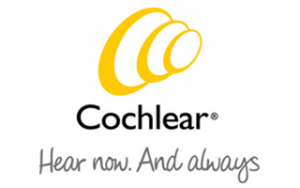
Introduction
Previously, we wrote an article on the development of cochlear implant. This article will cover the business of cochlear implantation.
Market research company, Grand View Research, estimated that the cochlear implantation market was worth US$1.1 billion in 2015. As a medical device, with cochlear implant, a person can achieve better sentence understanding as compared to hearing aids. At present, cochlear implants are the only effective means of allowing the social interactions of individuals suffering from hearing loss. The first cochlear implant was approved by FDA of the US in 1984, which was made by 3M Corporation, the then market leader.
Increasing incidence of neonates (new born child) born with hearing defects is driving the market for cochlear implant systems. According to World Health Organization (WHO) hearing loss statistics, each year, approximately, 134 million children are born, out of which approximately 1 to 3 newly- born per 1,000 are with learning loss, which is treatable only with cochlear implant. Thus, there is a need for a minimum of 134,000 cochlear implants annually. The number of cochlear implants is likely to increase to approximately 160,000 per year if the hearing loss is considered for both ears.
Apart from the rising number of patients suffering from hearing loss, technological advancements, strategic initiatives by industry players, and favourable government regulations are driving the growth of the global cochlear implant systems market in 2016. For instance, in 1979, the University of Melbourne and Nucleus Limited got approval from the Australian Department of Productivity to manufacture and market 22 cochlear implants. In another event, the National Institutes of Health (NIH) of the US, funded the first consensus conference to speed up the acceptance of multi-electrode cochlear implants. Market players are focused on the development of devices with reduced noise, quickly chargeable, long battery life, and waterproof. According to the World Health Organization (WHO), the current production of hearing loss aids is only 10 per cent of the actual need. Thus, there is a lucrative opportunity for new companies to enter the global cochlear implant systems market.
The global cochlear implant systems market has been segmented based on type of fitting, end-user, and region. Based on type of fitting, the market is segmented into unilateral implantation and bilateral implantation. The unilateral implantation segment dominates the global cochlear implant systems market owing to low cost. Unilateral implantation is common in adults. The bilateral implantation segment is expected to expand at a fast growth in future owing to rising demand for cochlear implants by pediatric patients suffering from hearing loss. Moreover, several countries are offering reimbursement only for bilateral implantation contributing to the growth of the segment. In terms of end-user, the market is segmented into hospitals, ENT clinics, and other end-users. The ENT clinics segment dominates the global cochlear implant systems market in 2016, owing to increasing patient population suffering from hearing loss, and growing patient preference towards treatment in ENT clinics in emerging countries. According to WHO estimates in 2012, out of the total worldwide population with hearing impairment, 91 per cent were adults and 9 per cent were children.
Geographically, the global cochlear implant systems market is distributed over North America, Europe, Latin America, Asia Pacific, and Middle East and Africa. Asia Pacific region is expected to dominate the global cochlear implant systems market owing to the high prevalence of hearing defects in the region. Middle East and Africa region is expected to account for the second largest share in 2016. This is attributable to the highest incidence of otitis media, ear infections owing to lack of proper hygiene practices, and increasing pregnancy and genetic complications leading to hearing loss in neonates. Europe is the next largest market for cochlear implants owing to increasing geriatric population.
Competitive Market Share
Cochlear implant systems industry is consolidated with presence of few players such as Cochlear Limited (Nucleus), Sonova, William Demant and MED-EL. According to market research company, Global Market Insights, Inc., the manufacturers are engaged in rigorous research and development activities aimed at improving hearing outcomes and expanding indications for these solutions. The industry participants employ strategies such as collaboration, acquisition, new product development and expansion of manufacturing capacity for increasing their market presence.



Business Performance of Key Participants
We have analysed the annual report of Cochlear Limited, which is the global leader in implantable hearing solutions with products including cochlear implant, bone conduction implants and acoustic implants. Cochlear Limited commenced its operation in 1981 as the Nucleus Group and in 1995 listed on the Australian Stock Exchange (ASX). It is based on the campus of Macquarie University in Melbourne, Australia. The company estimates that more than 450,000 recipients have been implanted with one of its implants.
The company invested more than A$150 million each year in research and development activities and currently participated in more than 100 collaborative research activities. Its 2017 financial performance is highlighted below:
| Cochlear implants | 32,552 |
| Sales revenue | A$ million |
| Cochlear implants | 767.781 |
| Services (sound processor, upgrades and accessories) | 305.589 |
| Acoustics (bone conduction and acoustic implants) | 166.363 |
| Total | 1,239.733 |